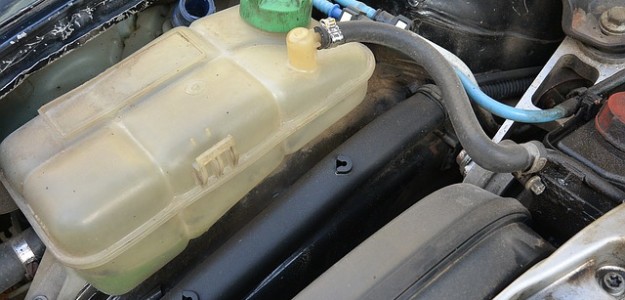
Ever wondered how many explosions occur inside the engine of your car per minute? Well, A 4-cylinder engine car produces 4,000 controlled explosions per minute inside its engine; as it cruises along the highway at 50 mph the spark plugs ignite a fuel-air mixture in each of the cylinders in order to propel the car down the road. Huge amounts of heat will obviously be produced in the process, which if not controlled, can destroy the engine in minutes.
The purpose of the cooling system is to regulate these temperatures. Modern cooling systems have not changed much compared to the traditional systems. Although they've definitely become more efficient and reliable, the cooling system basically consists of a liquid coolant circulating through the engine. This coolant is then taken to a radiator, which cools it using air streams entering from the front grill of the car. The cooling systems of today are designed to maintain a constant temperature for the engine, regardless of whether the outside temperatures are at 120 degrees Fahrenheit, or even 10 below zero. When the engine temperature is kept at a low, emissions rise while fuel economy suffers. When the temperatures are too high for too long, the engine simply self-destructs.
How the Cooling System Works
There are two types of car cooling systems. Air cooling systems were popularly used in the twentieth century, but are rarely used in modern cars. Liquid cooled systems are presently almost used by all manufacturers worldwide. The common system consists of:
- Radiator
- Water pump
- Thermostat
- Anti-freeze
- Heater core
- Engine coolant jacket
- Hoses and valves
The cooling liquid has a 50/50 mixture of water and glycol. The fluid is called a coolant or anti-freeze. It serves as the media removing the engine heat and dispersing it. The anti-freeze is usually kept under pressure so heat expands it up to about 15 psi. When the pressure exceeds 15 psi, there's a relief valve around the radiator's cap that opens to expel some of the liquid to keep the pressure at a safe level. Let's look at the rest of the major parts in the system.
Water pump: A serpentine belt, chain, or timing belt is used to run the water pump. The pump has an impeller to circulate the anti-freeze in the system. Since it's run by a belt tied to the engine, its flow is tuned into the engine’s RPM.
Radiator: The radiator consists of a tube system offering a large surface area to cool the coolant efficiently. As the air passes through the tubes, heat is removed from the coolant.
Thermostat: Before the antifreeze goes to the engine, it must pass through a thermostat. This makes sure the thermostat stays closed until the engine reaches its best operating temperature. Once achieved, the antifreeze is allowed to circulate in the system.
The heater core: This is mounted near or inside the passenger compartment. As the coolant passes through it, a fan placed over the heater blows the heat to remove it from the fluid already inside, letting warm air into the passenger's compartment when the heater is turned on.
Engine coolant jacket: The anti-freeze usually passes through some small passages that surround the engine block. This is the coolant jacket. From here, the coolant absorbs heat surrounding the engine into the circulation cycle.
Maintenance and Troubleshooting Tips
- Be sure to check the coolant/antifreeze fluid level monthly. You should only use a 50/50 solution of the coolant and water.
- The quality of water used is crucial to the protection of the cooling system. Water with high mineral content can potentially cause corrosion or scaling. Use deionized or distilled water for the solution.
- The belts should be inspected on a monthly basis. Replace worn-out, glazed, or frayed belts.
- Check the hoses periodically, and replace rotten, bulging, and brittle hoses. Also, tighten the hose clamps.
- CAUTION: Never remove the radiator pressure cap on a hot engine!
We're always available if you have questions or comments. Give us a call today!
Book An Appointment